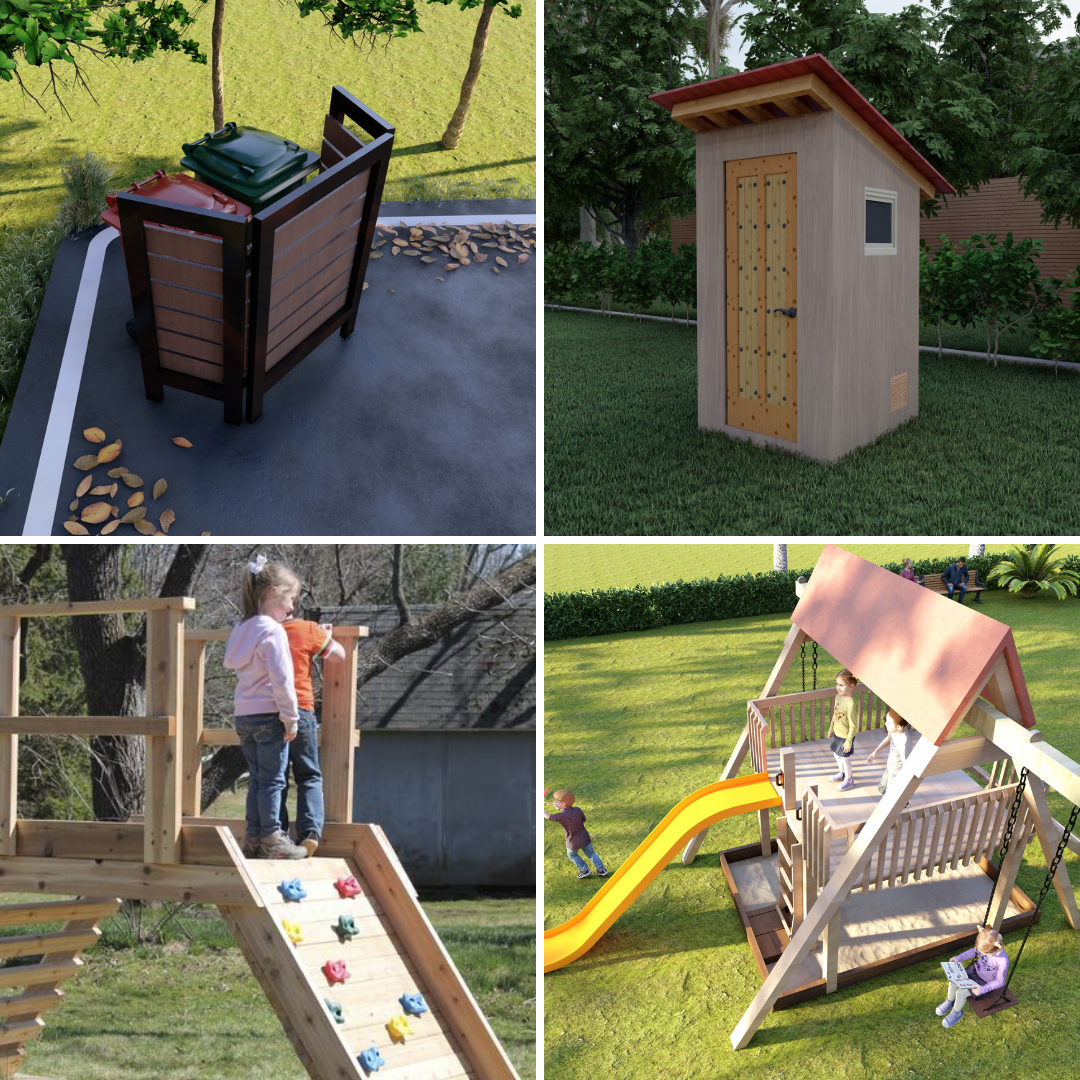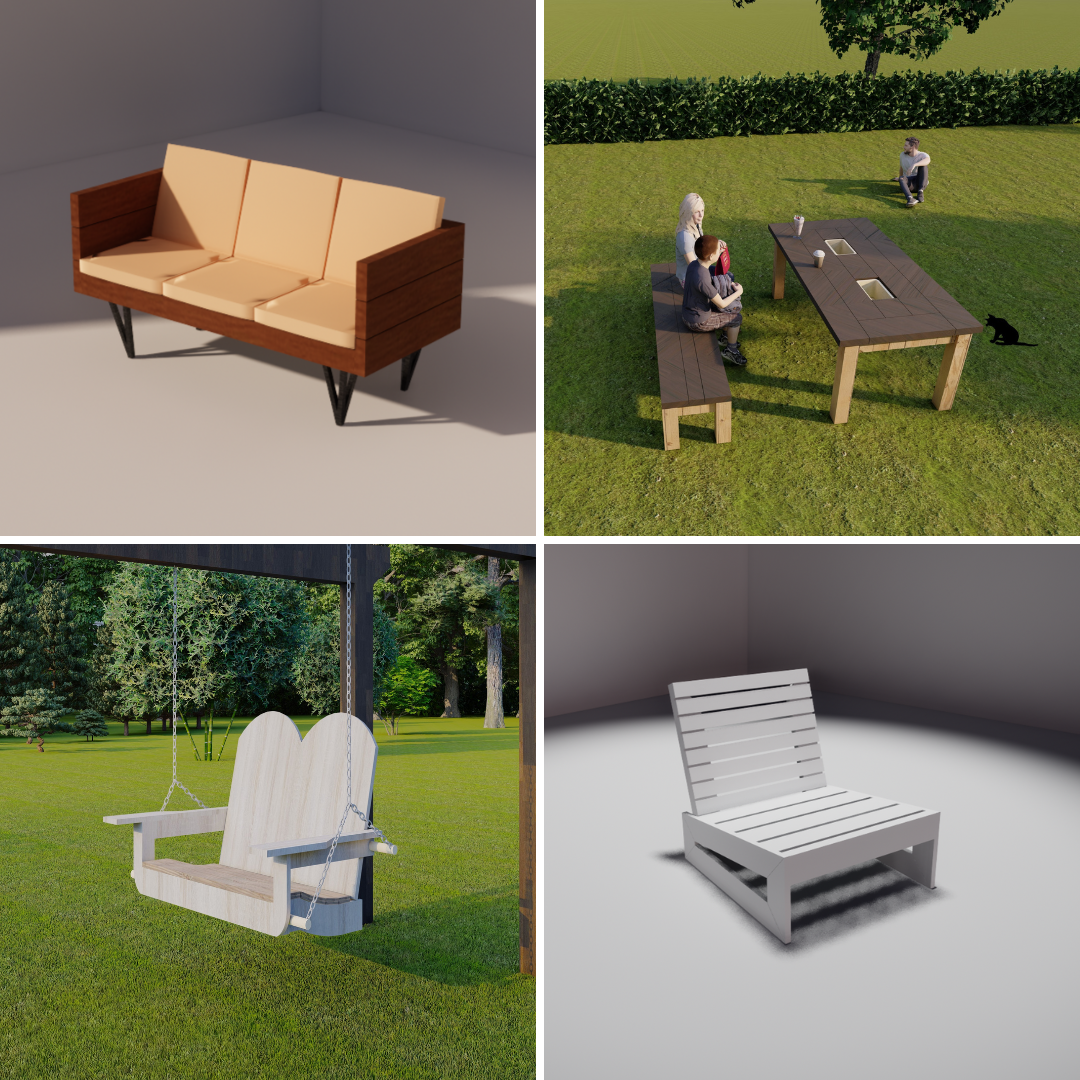
Top 5 Eco-Friendly Features to Add to Your Tiny Home
Share
As tiny homes continue to rise in popularity, many homeowners are looking for ways to make their homes not only small in size but also sustainable in every way possible. Eco-friendly features are becoming a crucial part of tiny home living, helping homeowners reduce their environmental impact while maintaining comfort and functionality. Adding these sustainable features ensures that your tiny home doesn’t just occupy a small footprint but also leaves a lighter impact on the planet. If you’re interested in learning more about living sustainably off the grid, check out [Off-Grid Living in a Tiny Home: What You Need to Know] for a comprehensive guide.
When planning your tiny home, it's important to consider which green elements align best with your lifestyle, energy needs, and the environment. By carefully selecting eco-friendly systems, materials, and appliances, you can create a tiny home that’s both energy-efficient and environmentally responsible. If you want further inspiration for your tiny home design, [Best Sustainable and Eco-Friendly Tiny Home Ideas – Full Guide] offers a detailed look at the most innovative and effective ideas for making your home both green and functional. In this blog post, we’ll explore five key eco-friendly features that are easy to integrate into your tiny home design, enhancing both its sustainability and livability.
1. Solar Power Systems: Harnessing the Sun’s Energy
One of the most popular eco-friendly features to add to your tiny home is a solar power system. Solar energy is renewable, reduces reliance on fossil fuels, and can drastically lower your monthly electricity bills. Solar panels are particularly suited to tiny homes due to their compact size and low energy consumption. With fewer appliances and a smaller overall footprint, tiny homes typically require less energy than conventional homes, making them ideal candidates for solar energy.
When integrating a solar power system into your tiny home, several factors should be considered:
- Roof space: While tiny homes have limited roof area, they still offer enough space to install a few solar panels. Make sure to plan carefully for maximum efficiency.
- Energy needs: Calculate the amount of electricity your tiny home will need. This includes lighting, appliances, heating, and cooling systems. Most tiny homes use minimal energy, but it's important to ensure that your system can handle peak demand.
- Battery storage: In off-grid living situations, battery storage is key. Solar panels collect energy during the day and store it for use during cloudy weather or at night. Choosing high-quality storage batteries will ensure that you can depend on your solar system at all times.
Investing in solar energy is a win-win, providing sustainable power for your tiny home while reducing long-term energy costs. Though the initial installation can be expensive, the savings over time will justify the upfront cost.
2. Rainwater Harvesting: Sustainable Water Management
Water conservation is another vital component of eco-friendly tiny home living. One of the most effective methods to manage water sustainably is through a rainwater harvesting system. By capturing rainwater, you can use it for various non-potable needs such as irrigation, flushing toilets, or washing dishes. This reduces your reliance on municipal water supplies and conserves water, especially in areas that are prone to drought or have limited access to fresh water.
A rainwater harvesting system works by collecting water from the roof and channeling it into storage tanks. From there, it can be filtered and used for various purposes, depending on your filtration system. To ensure clean water, consider installing high-quality filtration and purification systems.
Important considerations for a rainwater harvesting system:
- Roof material: Certain roofing materials are more suitable for collecting rainwater. Metal roofs, for example, are ideal because they don't leach harmful substances into the water.
- Storage tank size: The amount of rainfall in your area and your water usage needs will determine the size of your storage tanks. In some areas, a small tank may suffice, while in others, multiple tanks may be necessary.
- Filtration system: You’ll need a good filtration system to ensure the water is clean enough for use. Options include basic mesh filters to remove large debris and more advanced systems for purifying the water.
Rainwater harvesting is a great way to minimize water waste and contribute to a more sustainable lifestyle. Whether you’re living in an urban area or off-grid, it’s a practical solution for conserving one of our most precious resources.
3. Energy-Efficient Appliances: Minimizing Energy Waste
In a tiny home, space is limited, so every appliance you choose should be energy-efficient to minimize your energy usage. Fortunately, there are many energy-efficient appliances on the market designed specifically for smaller homes. These appliances consume less power, which is crucial for keeping your tiny home’s energy consumption as low as possible. Energy-efficient appliances not only reduce your utility bills but also help lower your home’s overall environmental footprint.
Some key energy-efficient appliances for tiny homes include:
- Mini fridges: Tiny homes benefit from smaller, energy-efficient fridges, which use significantly less energy than standard-sized refrigerators.
- Induction cooktops: Induction cookers are more energy-efficient than traditional electric or gas stoves, as they directly heat the cookware, reducing energy loss.
- Low-flow fixtures: Installing low-flow faucets and showerheads reduces water and energy usage by ensuring that less water is required to operate the fixtures. This is particularly useful for conserving both water and energy.
- LED lighting: LED bulbs consume far less energy than incandescent bulbs and have a longer lifespan. Replacing traditional lighting with LED options is one of the easiest ways to cut down on energy usage.
Energy-efficient appliances are essential in making tiny homes more sustainable. By opting for smaller, more energy-conscious appliances, you’ll be able to maintain a functional living space while reducing your carbon footprint.
4. Insulation and Passive Solar Design: Maximizing Energy Efficiency
Good insulation is one of the best ways to make your tiny home more energy-efficient. Proper insulation helps keep the temperature inside your tiny home regulated, reducing the need for heating or cooling systems. Whether you're in a cold or hot climate, insulation is crucial for ensuring your home stays comfortable year-round without excessive energy use.
Additionally, passive solar design principles can help you naturally heat your home with minimal energy use. This design takes advantage of the sun’s warmth to keep your home comfortable in winter while blocking excessive heat in the summer. By strategically positioning your windows and using thermal mass materials, you can maximize the effectiveness of passive solar design.
Popular eco-friendly insulation options include:
- Spray foam insulation: Highly effective for sealing gaps and cracks, spray foam offers excellent thermal resistance, helping to keep your tiny home warm in winter and cool in summer.
- Natural materials: Wool, cotton, and hemp are renewable insulation options that are both sustainable and efficient. These materials help regulate temperature while being kind to the environment.
- Recycled denim: Recycled denim insulation is a green alternative to fiberglass, offering excellent insulation properties while being made from post-consumer waste.
By investing in quality insulation and passive solar design, you can create a tiny home that requires less energy for heating and cooling, making it more sustainable and comfortable to live in.
5. Green Building Materials: Choosing Sustainable Construction Choices
Building a tiny home using eco-friendly materials is one of the most effective ways to make it sustainable. The materials used in your tiny home’s construction should be renewable, recyclable, and non-toxic. Sustainable building materials minimize waste, reduce energy consumption, and contribute to a healthier home and environment.
Here are some eco-friendly materials to consider:
- Reclaimed wood: Using reclaimed or repurposed wood from old buildings or furniture reduces the need for new timber and prevents unnecessary waste. It also gives your tiny home a unique, rustic charm.
- Bamboo: Bamboo is a fast-growing, renewable resource that can be used for flooring, cabinetry, and furniture. It’s incredibly durable and is an excellent choice for eco-conscious homeowners.
- Recycled steel: Steel is durable and 100% recyclable, making it a perfect material for framing and roofing. It’s also energy-efficient and long-lasting.
- Low-VOC finishes: Volatile organic compounds (VOCs) in paints and finishes can be harmful to health and the environment. Opt for low-VOC or VOC-free products to improve your home’s indoor air quality.
Choosing sustainable materials for your tiny home’s construction can help reduce your carbon footprint and create a healthier, more environmentally friendly living space.
Conclusion
Incorporating eco-friendly features into your tiny home not only makes it more sustainable but also allows you to live in harmony with the environment. Solar power, rainwater harvesting, energy-efficient appliances, insulation, and green building materials are just a few ways you can enhance your tiny home’s eco-credentials. By carefully planning and selecting sustainable features, you can create a tiny home that minimizes its impact on the planet while providing all the comforts of modern living.







